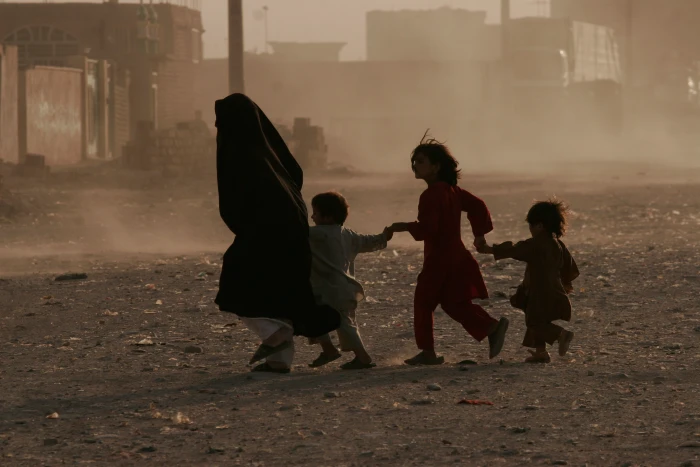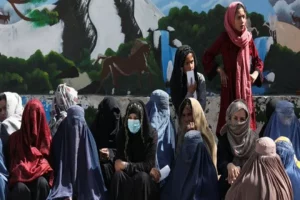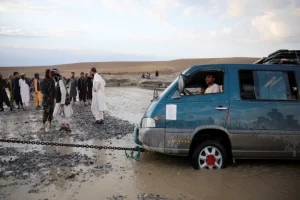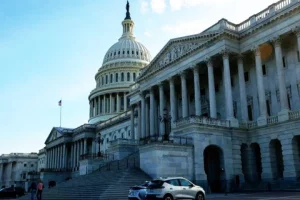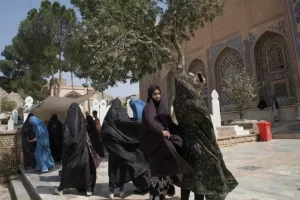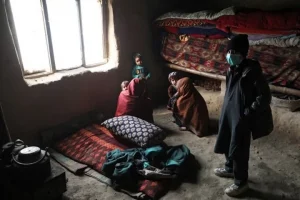Covid-19 pandemic, drought, approaching winter season combined with the current political uncertainty, frozen foreign reserves and collapsing public finances could sink as much as 97 percent of the Afghanistan population below the poverty line by mid-2022.
A rapid appraisal study titled 'Economic Instability and Uncertainty in Afghanistan after August 15' released by the United Nations Development Programme (UNDP) has expressed deep concerns over Afghanistan teetering on the brink of universal poverty while contending with the upheaval caused by the current political transition.
The future macroeconomic pathways for the country, which had seen considerable progress being made in the last 20 years – Per capita incomes doubled since the early 2000s; Life expectancy at birth extended by nine years; Years of schooling increased from six to 10; the number of students increased from 800,000 to over 8 million with more than 3 million girls entering the education system – are now clouded than ever before after the Taliban takeover.
The UN analysts project that, depending on how the conflict evolves, Afghanistan could add economic losses of up to 13 percent to its unfolding tragedy by the middle of 2022. That percentage, they say, may seem modest given the scale of the country's crisis, but not when it translates into real poverty.
A 10-13 percent reduction in GDP could, in the worst-case scenario, bring Afghanistan to the precipice of near universal poverty – a 97 percent poverty rate by mid-2022 – despite the difficult but real progress achieved over the last 20 years, says the UNDP study.
The UN body said that with the national economic policy in a state of flux, the 'life shocks' of skyrocketing food prices, interruption in economic activities and essential services, rising food insecurity are felt the hardest in poor urban and rural communities.
"The most vulnerable are facing the unenviable choice of either finding a way to sustain their livelihoods while remaining in place or joining the large numbers already displaced," it mentions.
Freeze on foreign reserves held in Western countries; a burgeoning trade imbalance; stagnant private economic initiatives; a debt overhang that cannot be serviced and increasing pressure on the banking system add to the severe economic instability across multiple channels in a climate of heightened uncertainty.
"We are facing a full-on development collapse on top of humanitarian and economic crises," said Kanni Wignaraja, UN Assistant Secretary-General and UNDP Director of the Regional Bureau for Asia and the Pacific.
"Half of the population is already in need of humanitarian support. This analysis suggests that we are on course for rapid, catastrophic deterioration in the lives of Afghanistan's most vulnerable people."
The appraisal used a Computable General Equilibrium model for Afghanistan to simulate scenarios based on the latest available data (2018). The modeling identified a worst-case scenario defined by a
two-month interruption to trade with all major partners, a four percent decrease in capital spending efficiency, and disruptions in connectivity. According to the appraisal, this combination of factors
could cause the baseline poverty rate, now at 72 percent, to balloon.
In response, UNDP is proposing a package of interventions designed to help improve the immediate living conditions of the most vulnerable people and communities, prioritising safeguarding women and girls' rights. The package focuses on essential services, local livelihoods, basic income and small infrastructure and aims to support close to nine million vulnerable people through a 24-month community development programme.
Also Read: Chaos along Afghan-Pak border as thousands take land route to flee Taliban rule






